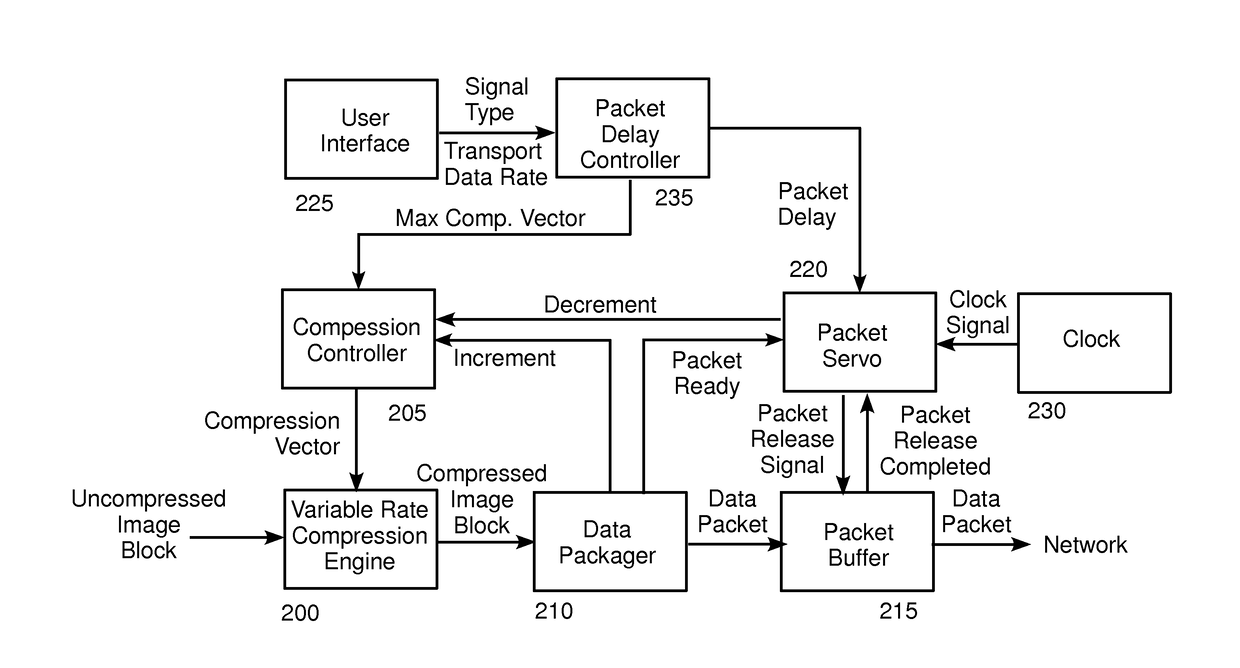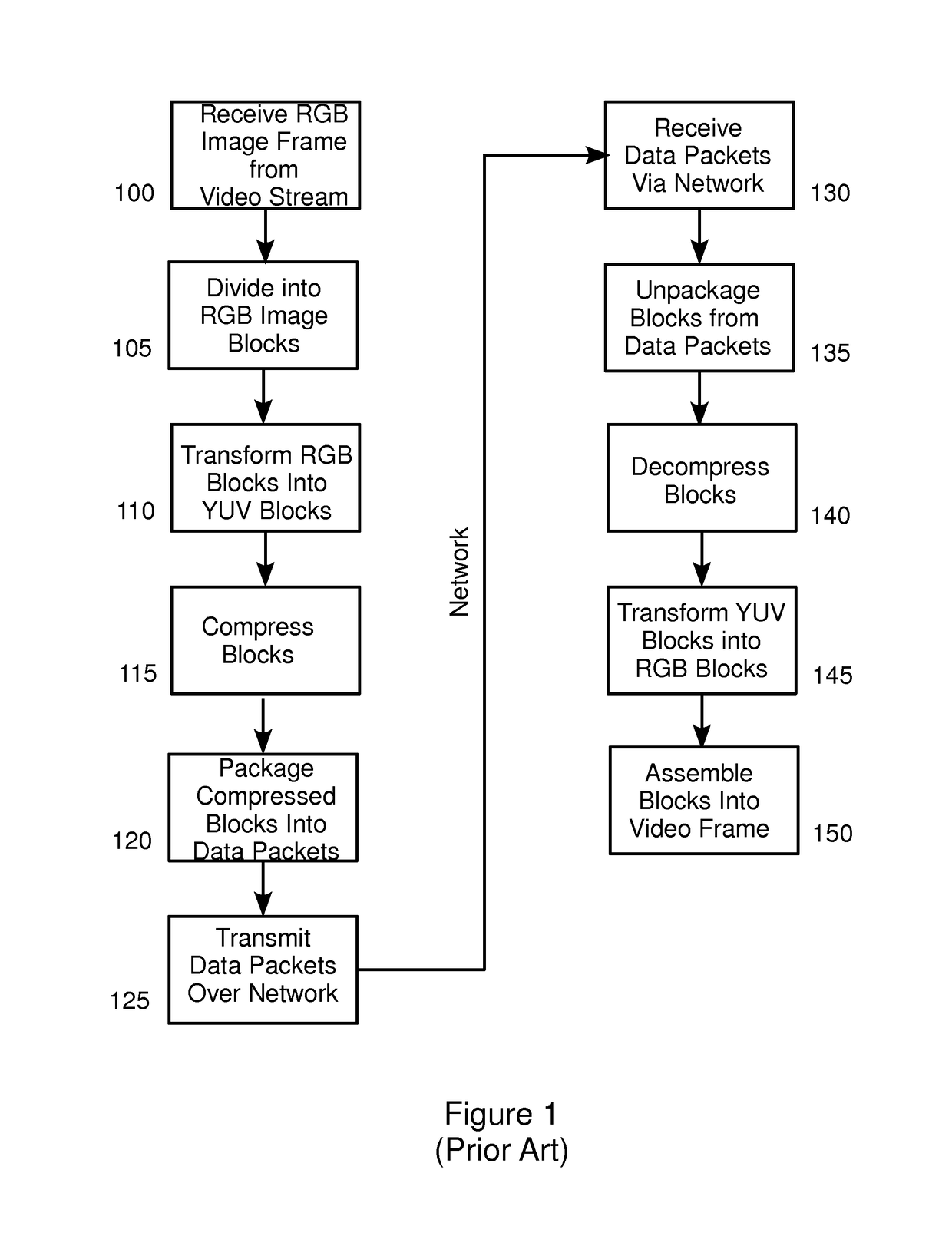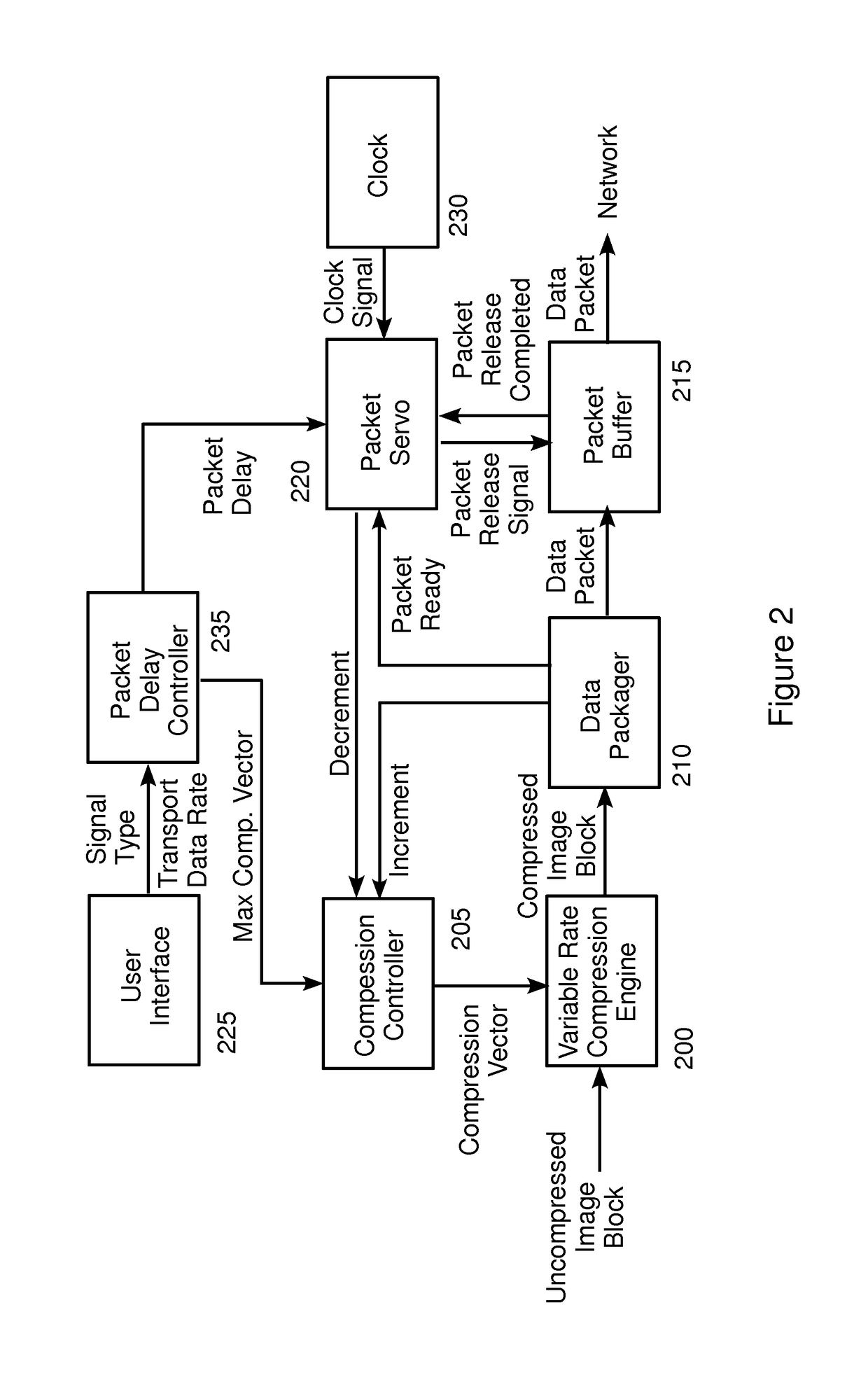Method and apparatus for adaptively compressing streaming video
a streaming video and adaptive compression technology, applied in the direction of electrical apparatus, selective content distribution, pictoral communication, etc., can solve the problems of decompression media, loss of information in received, limiting the bandwidth available to a particular video stream, etc., to achieve stable packet servo and reliable management of network bit ra
- Summary
- Abstract
- Description
- Claims
- Application Information
AI Technical Summary
Benefits of technology
Problems solved by technology
Method used
Image
Examples
Embodiment Construction
[0026]In the following description, numerous specific details are set forth to provide a more thorough description of the present invention. It will be apparent, however, to one skilled in the art that the present invention may be practiced without these specific details. In other instances, well-known features have not been described in detail so as not to obscure the invention.
[0027]FIG. 1 is a block diagram of a prior art process for compressing and transmitting a video stream over a network. Embodiments of the process of FIG. 1 are described, for example, in co-pending U.S. patent application Ser. No. 11 / 991,027 (referred to herein as “the '027 application”), published as U.S. Patent Publication No. US2010 / 0014590 on Jan. 21, 2010, assigned to the assignee of the present invention, which is incorporated in its entirety by reference herein. In the process of FIG. 1, an image frame from a video stream in RGB format is received, for example in real time, at step 100. At step 105, t...
PUM
 Login to View More
Login to View More Abstract
Description
Claims
Application Information
 Login to View More
Login to View More - R&D
- Intellectual Property
- Life Sciences
- Materials
- Tech Scout
- Unparalleled Data Quality
- Higher Quality Content
- 60% Fewer Hallucinations
Browse by: Latest US Patents, China's latest patents, Technical Efficacy Thesaurus, Application Domain, Technology Topic, Popular Technical Reports.
© 2025 PatSnap. All rights reserved.Legal|Privacy policy|Modern Slavery Act Transparency Statement|Sitemap|About US| Contact US: help@patsnap.com



